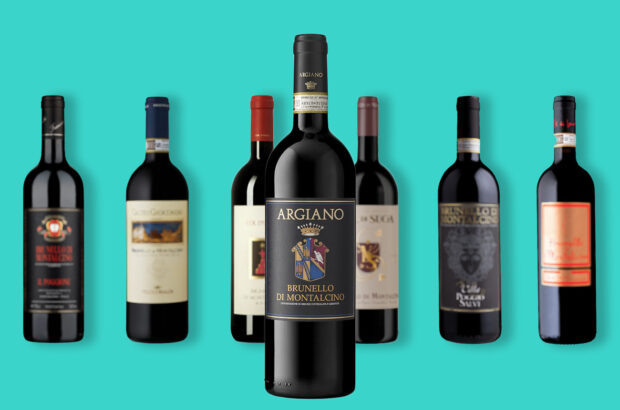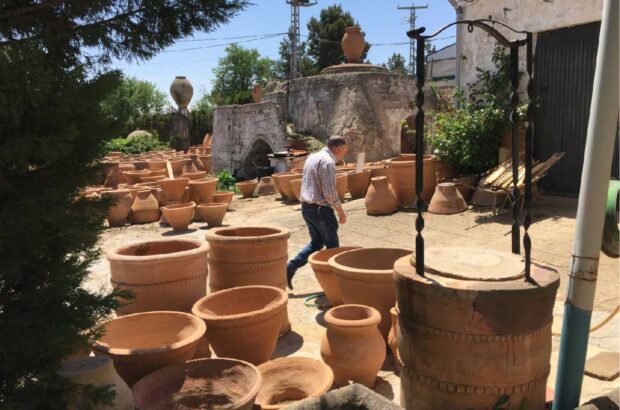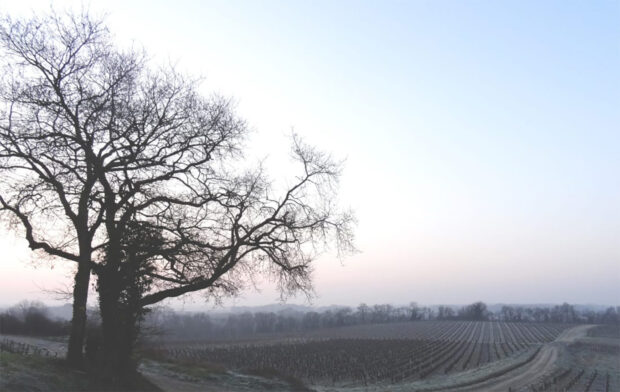- The Languedoc’s New World contingent remains tiny.
- New World influence encouraged much wider plantation of internationally popular varieties.
- New World forces applied nothing more complex than capitalism to ‘the coop-driven, partially subsidised system’.
- Languedoc’s advantage in the world market is precisely their image of traditionalism.
Languedoc and New World outsiders
Let me give you a tip on how to annoy Languedoc wine folk. You sit them down and adopt and earnest expression while explaining how impressed you are by the recent, staggering improvement in their product. Then you say: ‘You must be truly grateful to all these New World outsiders foe having given you the lead.’ Oh dear. The smiles fix, the fists clench lightly. You are in danger of losing friends.
Don’t get me wrong. Languedociens are generally pretty welcoming to foreigners these days. The fact that Robert Mondavi is effectively winning his battle to set up in Aniane – opposed by the Daumas Gassac but backed overwhelmingly by the local council (see panel) – is the latest evidence of changing attitudes.
On the other hand, they do get terribly fed up with the widespread assumption that the assorted New World incomers are responsible for directing the region towards the modern era. Read much of the English language press and you could easily conclude that until the Australian and, Americans and English showed up, no one had done a hands turn in Languedoc. Since their arrival, you would further conclude, they have been alone in the vanguard. The locals naturally resent this, not least because it is just plain wrong.
For a start, despite the enormous amount of attention it attracts, Languedoc’s New World contingent remains tiny. Exact figures are unavailable, but the chap at the French government land agency reckons the number of New World-owned businesses to be between 10 and 20. In a vineyard area which produces about three times as much as the whole of Australia, we are talking pinpricks.
Furthermore, the Languedoc vines were on the move well before the New Worlders stepped ashore. By the mid-1950’s, Pierre Julien was restructuring the Listel vineyard and planting both Chardonnay and Cabernet Sauvignon. In his mid-1960’s, the first growers were banding themselves into what was to become the mighty Val d’Orbieu coopertive – to concentrate on quality and bring home margins until then bagged by external negociants.
And Robert Skalli was into varietal production long before an Australian or American accent was heard about the place. In short, the New World impact needs putting into place. Languedocians were not natives waiting around for lessons, particularly not in the vineyard.
Llanguedoc-Roussillon wine region
First gap
That said, however, there were two big gaps. The first was between what Languedoc innovators were achieving and what was going on elsewhere in the region, where mediocrity ruled. The second was between what Languedoc as a whole and the outside world. Regional wines were not getting into the international market in the right circumstances – or, in many cases, not at all. Though nowhere near as overwhelming as suggested, New World influence has been significant in starting to fill these gaps. For the first, the sprinkling of winery operations encouraged much wider plantation of internationally popular varieties and brought wise advice on, say, the maturing of Chardonnay. This infuriated Languedoc’s traditional cooperative which were responsible for 75% of regional production and had never before experienced competition for supplies.
Second gap
In the second gap, New World forces applied nothing more complex than capitalism to what James Herrick – once winemaker, now consultant – terms ‘the coop-driven, partially subsidised system’. Long term investment planning, brand-building, price stability, marketing know-how – all things which New Worlders took with their mother’s milk were (and often still are) absent in the Languedoc where many producers aims reduced to selling fast, lobbying for hand-outs and passing on their land in reasonable shape to their son.
It wasn’t always their fault, of course. As Robert Eden (Domaines Cathare, Chateau Maris and other) says: ‘There are plenty people around here capable of making the most of market opportunities, but they lack any local, qualified investment advice.’ They are also hemmed in by their own smallness and the bewildering French administration.
The New Worlders had no time for this. As Irene Tolleret of Listel says, no without admiration: ‘The French tend to have the mentality of producers. They accept yo-yoing prices. The foreigners master costs and plan 25 yeard ahead for the needs of the market. For them, it is an industry which makes a profit.’
A change in attitude
Which is what they set about doing in Lanmguedoc, and the example has undoutably rubbed off. Herrick again: ‘What some foreign investment has shown is that you can receive good quality levels and sell at prices to justify new capital investment. And you now hear Languedoc people advocating this, which you rarely hears 10 years ago.’
This change in attitude, from protected, traditional activity to acceptance of market realities was timidly underway. In giving it a big push, the New World influence has been greater than is has been in the vines.
But it still has a way to go. Yves Castell, director of the Minervois syndicat, is one of the most clear-sighted analysts in Languedoc. He reckons that, while the top of the regional range might look after itself and the bottom, table wine end doesn’t have a world market role, the cast quantities in the middle require the sort of financial input not necessarily available from Languedoc’s own companies. He thus envisages more, not less, outside investment – to build the necessary brands at prices which justify marketing investment. More foreigners, in short. ‘Philosophically difficult, but economically god.’ he says.
So Languedoc becomes nothing more than a big business production site? Well, no, not at all. As Castell says: ‘The New Worlders come for brand product, then catch the terroir bug. They are taken with the particularity of our terroirs. They want to benefit. This is, after all the logic of the appellation system: start with the basic wines and move up to the characterful ones.
Mondavi approach
Which, right one cue, is exactly the Mondavi approach. Having established its Languedoc Vichon brand, Mondavi went searching in Aniane not for further brand supplies, but for a site on which to create a top quality item. Mondavi’s man in Languedoc, David Pearson, sounds more French than the French when he contemplates the future.
‘People who come here must be aware of Languedoc’s culture, of small family production and so forth,’ he says, ‘Languedoc wine shouldn’t be treated as a commodity, because it will struggle in a commodity market. Added value must come with identifying the product with core regional values. Stability will come from a recognition of regional diversity.’
In other words, Pearson believes that Languedoc’s advantage in the world market is precisely that image of traditionalism which has always held it back from the world markets. And people still say that capitalism isn’t wonderful.












